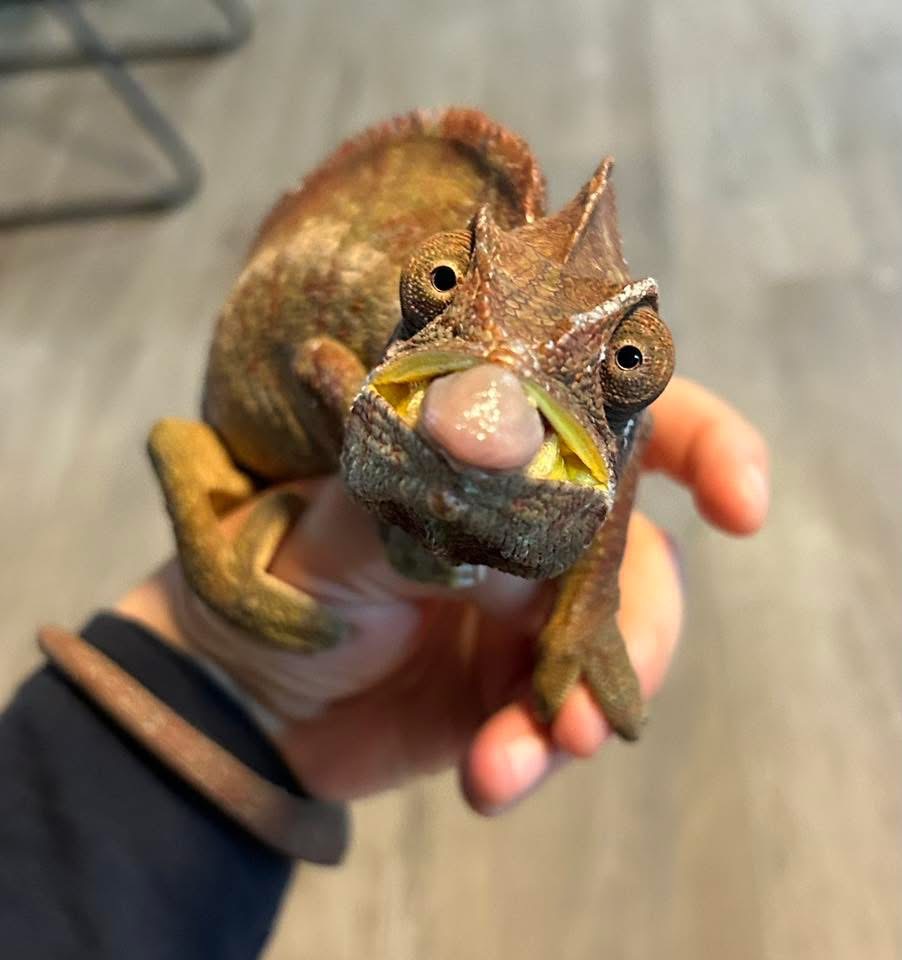Blessed Are the Unpunched: Chameleon Hostility in Close Quarters

In his 2020 paper published in Archaius (1(1): 1–3), Petr Nečas introduces a previously undocumented defensive behavior in chameleons: tongue punching. Traditionally, the ballistic tongue of chameleons has been studied almost exclusively in the context of prey capture—an extraordinary adaptation for precision feeding. However, Nečas presents compelling field and captive observations suggesting that tongue projection may also serve as a secondary antipredatory function, deployed in moments of acute threat.
The behavior, termed "tongue punching," involves rapid tongue projection not toward prey, but toward perceived aggressors—often human handlers or predators—without the intent to grasp. Instead, the tongue is used as a blunt-force deterrent, aimed at sensitive areas such as the face or eyes. Nečas documents this in several large-bodied species, noting its occurrence during handling, sudden environmental changes, or when the animal is cornered. The paper calls for further ethological study into the neuromuscular control and behavioral triggers behind this defensive tongue use, suggesting it may be more widespread than previously recognized.

A related and equally unusual behavior has been repeatedly observed by Kathrin Rudolph (in litt.) in her adult male Furcifer oustaleti. When manipulated—especially outside the vivarium—the chameleon launched deliberate tongue strikes toward her face, consistently targeting the eye region. The same behavior was directed at her husband, Guido Rudolph, and their neighbor. Notably, the aggression was more intense toward less familiar individuals, while Kathrin herself was generally tolerated unless the chameleon was held in an unfamiliar setting or on a hand. This suggests a clear pattern: territorial tolerance for the primary keeper, suspicion toward outsiders, and heightened defensiveness in novel contexts.
TELL US YOUR STORY!
Nečas, P. (2020). Tongue Punching, an unknown secondary antipredatory function of the tongue-shooting in chameleons (Reptilia: Chamaeleonidae). Archaius 1(1): 1–3.